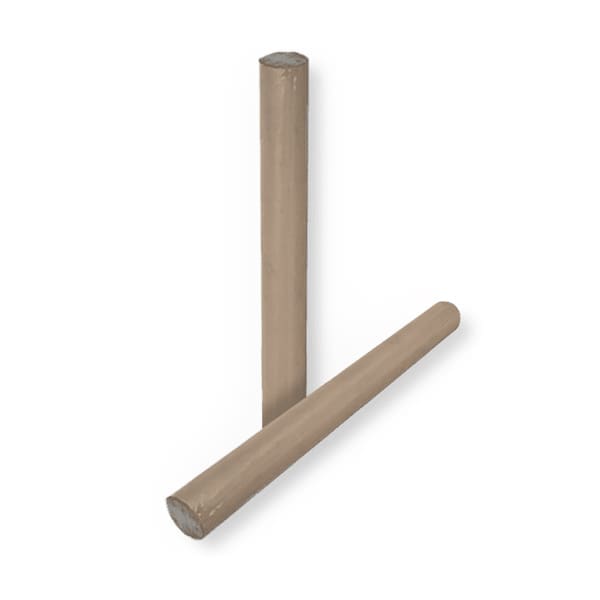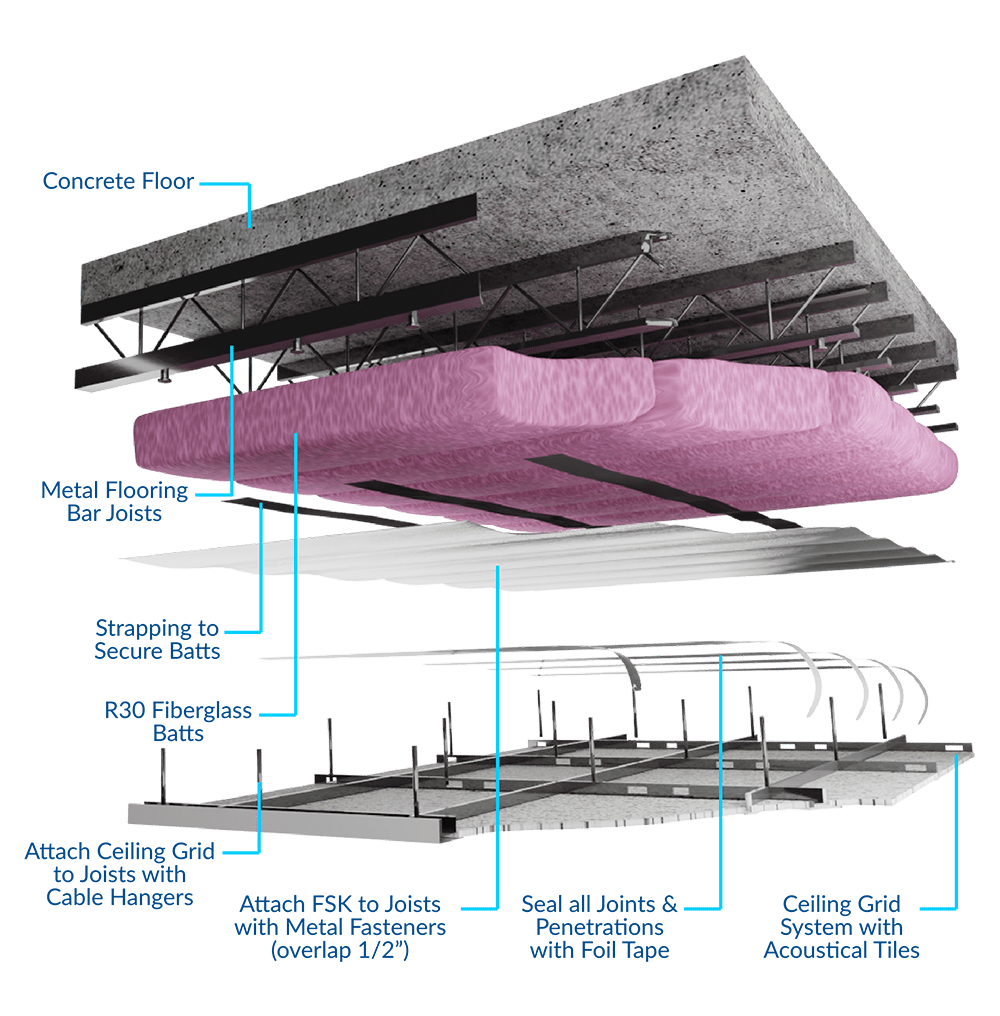A Safe and Effective Insulation Choice for Fire Protection
FSK Shield™ is a single-sided foil facing comprised of aluminum foil bonded to natural kraft paper with a flame retardant adhesive and reinforced with tri-directional fiberglass scrim.
FSK Shield™ is intended as a class A for >25 FS insulation facing. The product also can be used as an effective vapor retarder.
The aluminum facing also reduces radiant heat transfer for added R-value or as a radiant barrier and is available in 1000 square foot rolls 54″ wide.
Why FSK Shield™ Outperforms
- Class A Insulation Facing
- Ideal for Unfaced Batts
- Can Be Used as Radiant Barrier for Attics, Roofs and Walls
- Low-e Aluminum Foil Bonded to Natural Kraft Paper
- Reinforced with a Tri-Directional Fiberglass Scrim
- 54″ width
- 1000 sq. ft. Rolls
- Class A Flammability Rating
- National Network of Insulation Distributors and Contractors
- Adds R-4.6 to an Exposed Roof or Ceiling Application
- Cost-Effective Method to Meet Code Requirements for Flammability
- Replaces Expensive Foil-Faced Batts
- Increases Thermal Resistance for Better Performance
- Easy Handling & Installation
- Class A / Class 1 Flammability Ratings
- Class 1 Vapor Retarder
- Performs in Hot & Humid Climates
- Increases Energy Efficiency & Lowers Utility Bills
| Width of Roll | 54″ | |||
| Diameter | 5″ | |||
| Lineal Footage | 222′ | |||
| Coverage | 1000 sq. ft. | |||
| Weight | 25 lbs |
| Test Method | Description | Results |
|---|---|---|
| ASTM E-96 | Water Vapor Permeance | 0.02 |
| ASTM E-84/UL 723 | Surface Burning Kraft Exposed Flame Spread Rating | 25 |
| Kraft Exposed Smoke Developed Rating | 10 | |
| Foil Exposed Flame Spread Rating | 5 | |
| Foil Exposed Smoke Devlopment Rating | 0 | |
| FSK Shield & Unfaced Batt Flame Spread Rating | 15 | |
| Smoke Developed Rating | 0 | |
| ASTM E-408 | Emissivity | 0.03 |
| ASTM D-828 | Tensile Strength (lbs/in) | MD: 40 XD: 25 |
| Scrim pattern per lineal inch | MD 2 XD: 3 |
|
| ASTM D-774 | Mullen Burst Strength | 40 psi |
| ASTM C-1136 | Mold & Mildew | Pass |
| Dimensional Stability | Percent Length Change | 0.25% |
| Low Temperature Resistance | No Cracking or Delamination | -40F |
| High Temperature Resistance | No Cracking or Delamination | 240F |
| Puncture Resistance | Beach Puncture Units (Joules) | 25 |
| See IAMPO ES Report #0291 |
FSK Shield™ Safety Codes and Compliances
- Meets ASTM E-84
- Third-Party Verified Code Compliance, IAPMO ER 291
TECHNICAL DOCUMENTS
FREQUENTLY ASKED QUESTIONS
Request Product Support
Please don’t hesitate to reach out for inquiries, project consultations, or more information about FI-FOIL® reflective insulation system solutions. Our team of experts is dedicated to providing personalized assistance and technical expertise to meet your specific needs. Please note that the more completely the fields below are filled out, the more accurate your response will be.
A TRUSTED LEADER FOR REFLECTIVE INSULATION TECHNOLOGIES
PROVIDING YOU WITH SERVICE, INTEGRITY AND INNOVATION
We manufacture, market, and distribute high-performance reflective insulation technology and radiant barriers. Our products are sustainable and improve building performance and comfort all year round. Our reflective insulation technology is one of the fastest-growing technologies in the world and we want you to grow with us.















